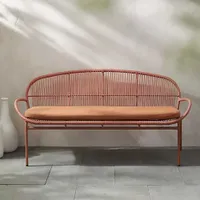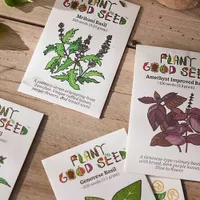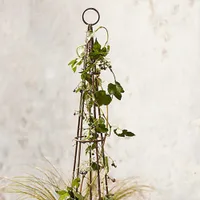Front yard vegetable garden ideas – 10 stylish ways to grow delicious crops
Transform the front of your plot into a harvestable haven – no matter its size


Are you looking to give the front of your plot a bit more purpose? Growing crops is a great way to utilize the space, and can elevate its aesthetics, too.
There are lots of ways to incorporate edibles into a front yard, even if you only have a small patch to play with. Many fruits and veggies grow perfectly in pots or even hanging baskets, while raised beds can add valuable structure to the layout of your space.
And using your front yard as a vegetable garden doesn't mean you have to miss out on ornamental plants. It's perfectly possible to embrace a potager style and enjoy both.
10 ways to grow edibles at the front of your plot
Try these ideas to transform your front yard into a pretty and productive area.
1. Build beautiful raised beds in your front yard
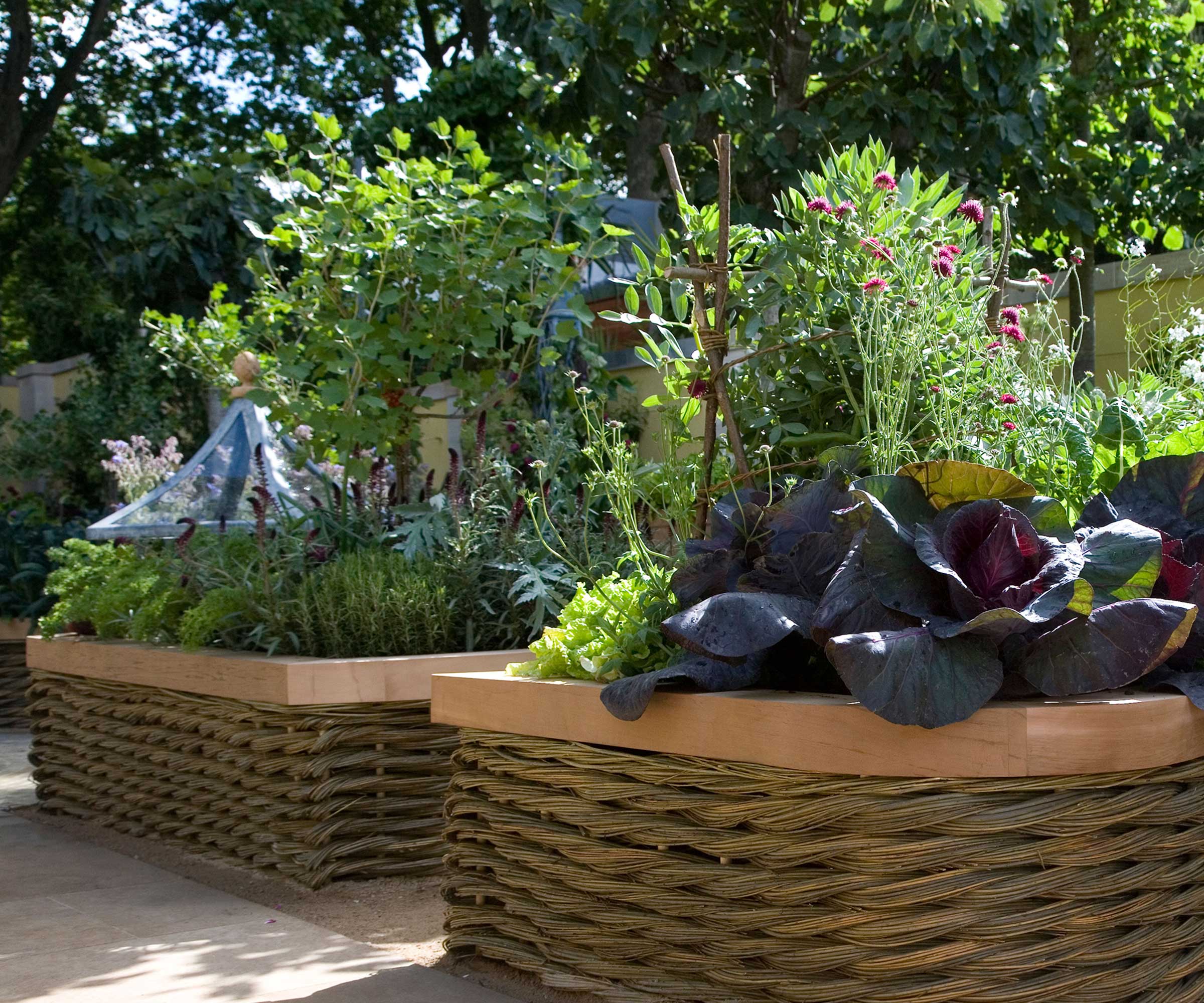
These woven raised beds add aesthetic appeal
Attractive raised beds and border features give an edible garden an intentional, well-cared-for look, says Lindsey Chastain, the Founder of The Waddle and Cluck, a blog about all things home and homesteading. 'Keep the beds neatly edged and enrich the soil with compost and organic matter.'
There are various materials you can use for raised beds, from woven wicker to upcycled pallets or clay bricks. Ensure they're the right width and depth for their purpose, and avoid making the common raised bed gardening mistakes for the best chance of success.
'For efficient watering of your vegetable garden, consider a drip hose and irrigation system, which provides even watering to roots,' says Rebecca Sears, a gardening expert at Ferry-Morse. The soil should be loose and well-drained, which will prevent your plants’ roots from becoming oversaturated, she adds.
Design expertise in your inbox – from inspiring decorating ideas and beautiful celebrity homes to practical gardening advice and shopping round-ups.

Lindsey started gardening in 2005, when her first son was born, as a way to save money. It started with a small window herb garden, then expanded to potted vegetables, and now, she and her husband can regularly be spotted in the garden on their homestead.
2. Grow crops in pots

Alpine strawberries grow happily in pots and hanging baskets
Container gardening is ideal for smaller spaces, or if you don't want to commit to building raised beds. Many fruits and vegetables will thrive in pots, as long as you position them where they get plenty of sun and use containers that are big enough to accommodate them. Try alpine strawberries, compact varieties of peas, or tomatoes (such as the 'Sweetheart Of The Patio Hybrid' tomatoes from Burpee).
Water them often, as they tend to dry out quicker than crops planted in the ground. Growing crops in this way can make it easier to tackle slugs and snails (but remember to always check under the lip of planters – a prime hiding spot).
3. Add personal details to your front yard vegetable garden
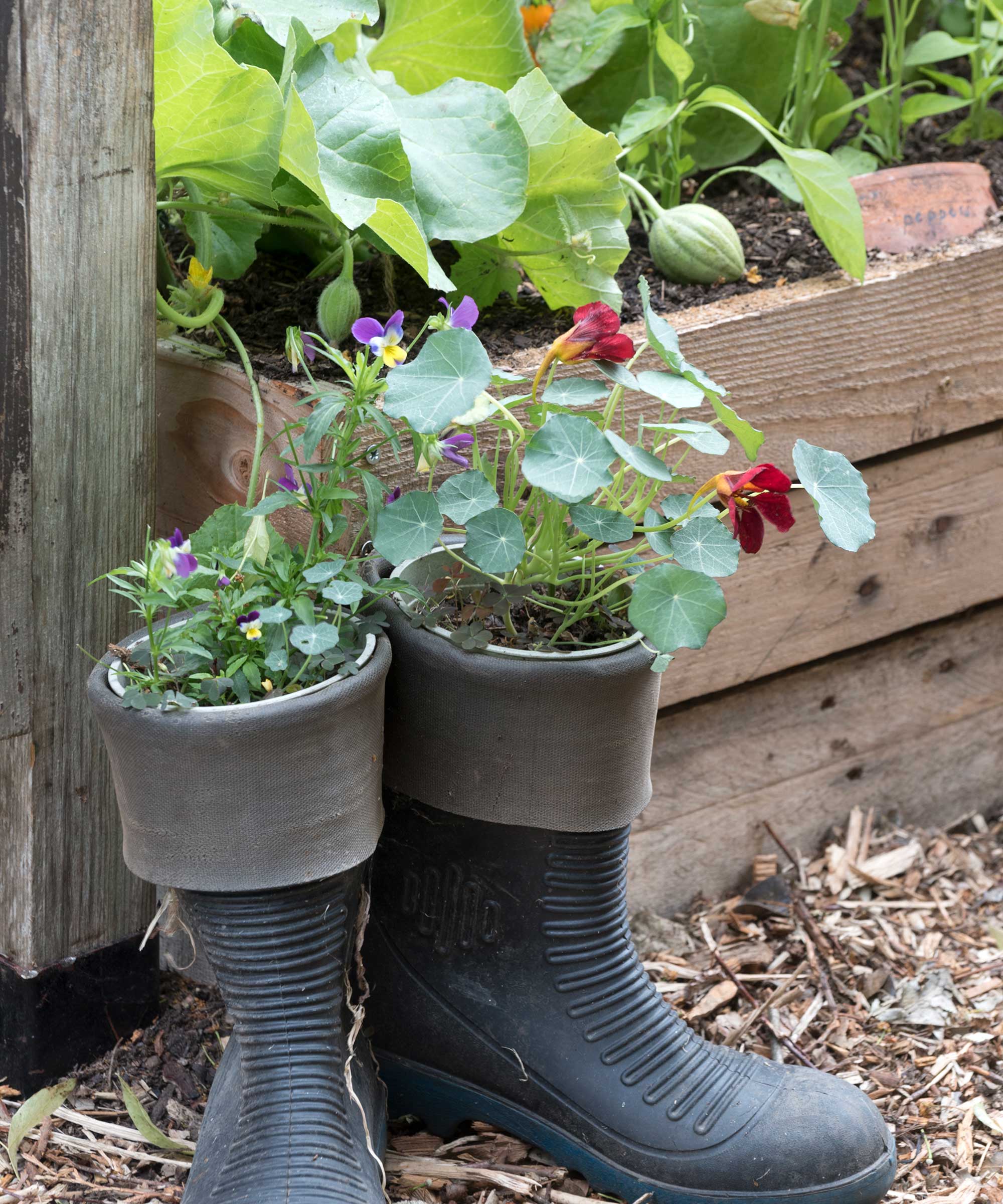
Give your plot a unique touch
'Don't be afraid to get creative and use ornamental details to enhance your front yard veggie garden,' recommends Lindsey.
'Painted signs with the names of vegetables add a whimsical touch, while unique containers like galvanized buckets and wheelbarrows allow you to grow potatoes, onions or herbs with vintage flair,' she says. Meanwhile, raised beds can be personalized with a lick of exterior paint.
Or, maybe you want to add a water feature to the mix, such as a bird bath. Alternatively, you could install a rain chain and rain barrel connected to your front porch, for harvesting rainwater.
Copper plant markers | $20 from Anthropologie
Label your herbs or vegetables with this set of 10 stylish and reusable markers, which come with a grease pencil.
4. Admire the view from a bench
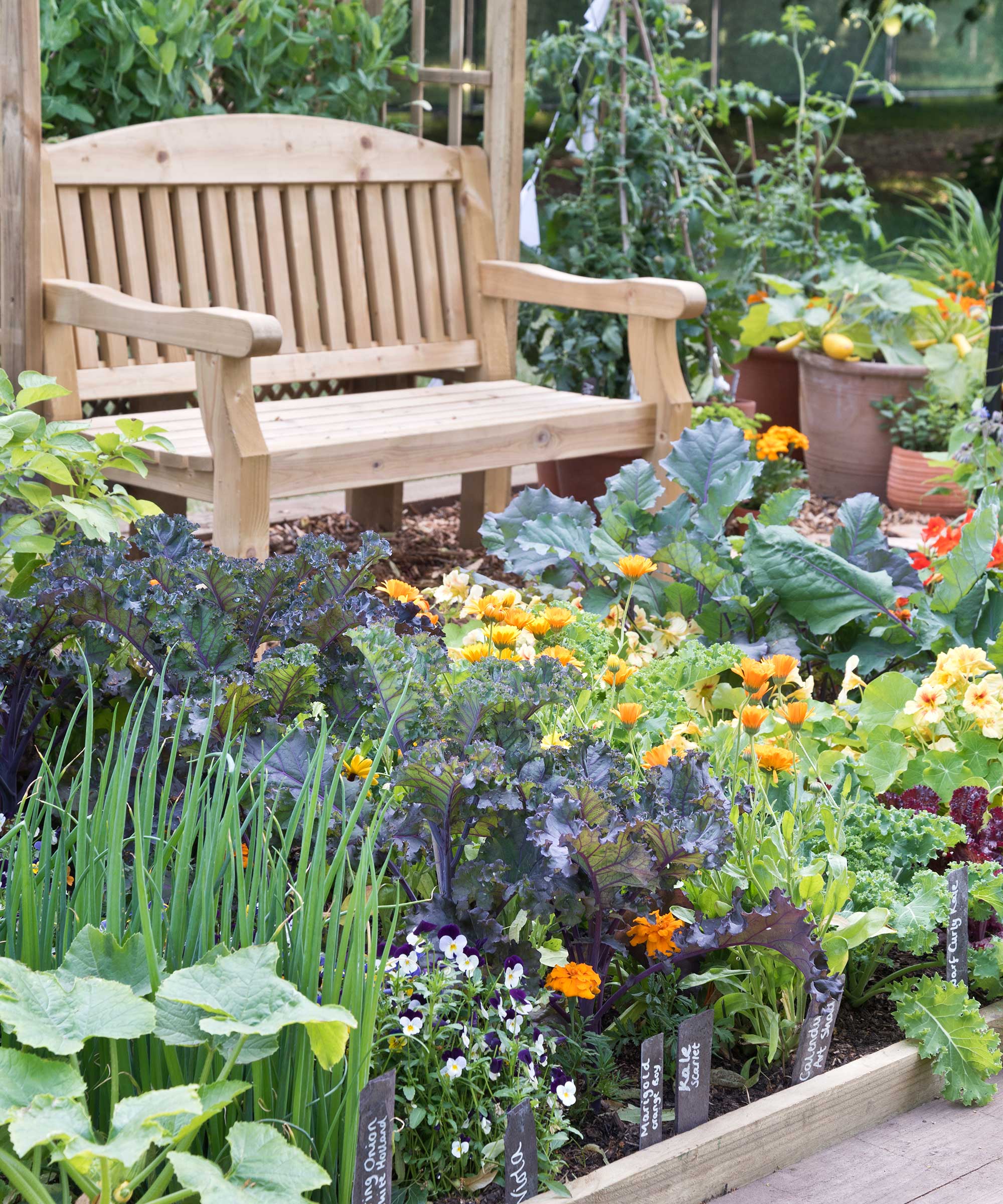
A wooden bench adds timeless style
'Be sure to include seating like a bench or chair so you can relax and enjoy the fruits of your gardening labor,' says Lindsey. Plus, sitting out front can provide a pleasant view of the world passing by.
An arbor with trellised sides is a good choice as it will provide shelter from the sun or the rain, and you can use it to support climbing plants.
Or, if you have the space, and your front yard feels relatively private, you could even opt for a compact bistro set as a place to enjoy a morning coffee or brunch amongst your crops.
Salento Bench | $648 from Anthropologie
We love the chic terracotta color of this contemporary bench, made from durable metal and outdoor-suitable rattan and topped with comfy cushions.
5. Throw some flowers into the mix
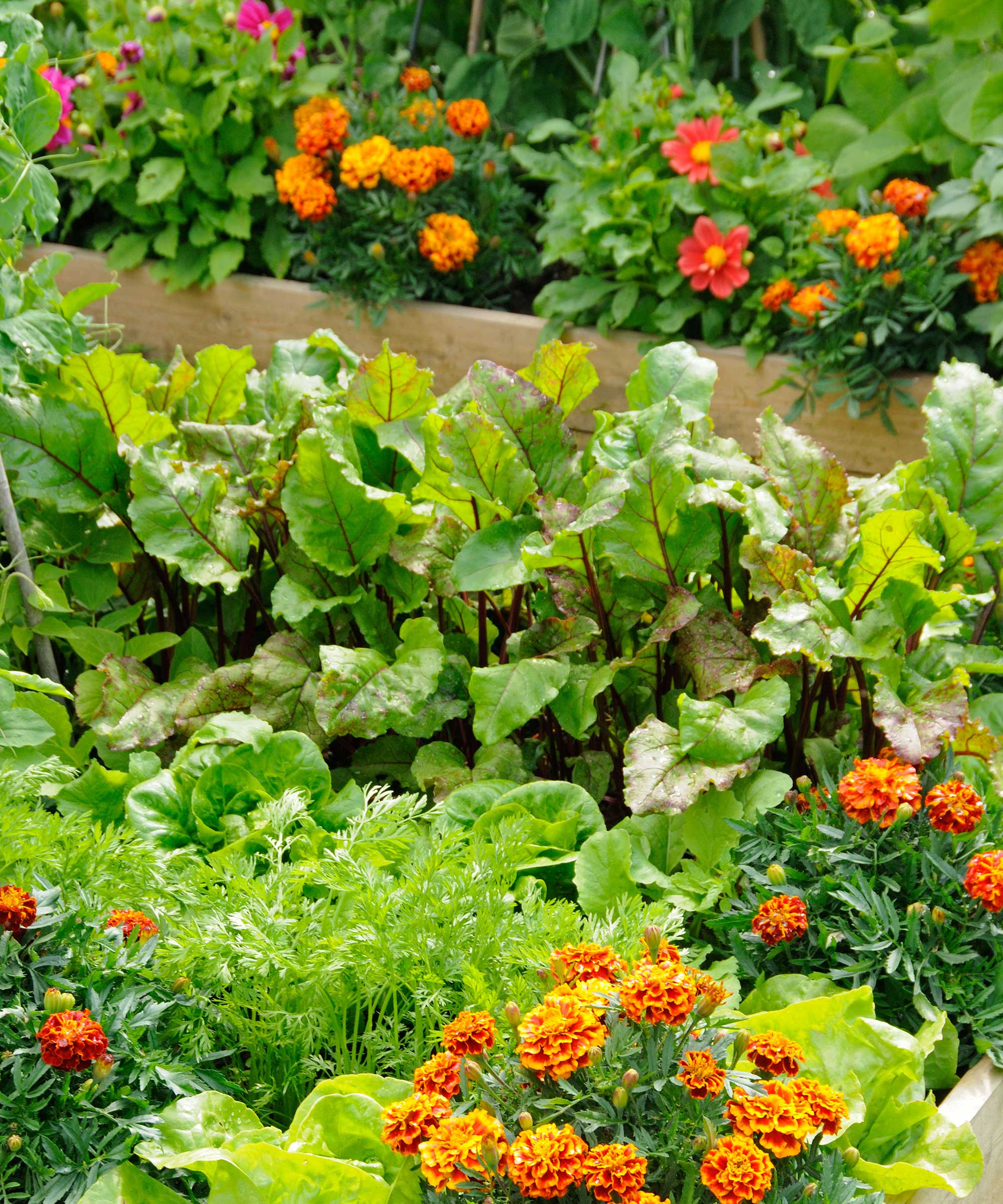
Many flowers make fabulous companion plants to vegetables
'I also love incorporating blooming plants like marigolds, zinnias, and nasturtiums to attract pollinators while providing a pop of color,' says Lindsey.
Such annuals are easy to grow from seed and make excellent companion plants. Plus, nasturtiums are edible flowers, adding a peppery kick to summer salads. Sunflowers are another popular choice for vegetable gardens, and you can harvest the seeds if you wish.
There are many crops that offer pretty flowers, too, meaning you can get the best of both worlds from just one plant. Many fruit trees grown in pots provide springtime blossom, while peas and broad beans have delicate blooms before they yield their crop. Zucchini produce flowers, too, which can be harvested and used in the kitchen.
6. Plant fragrant herbs near the entrance of your home

There are lots of different herbs to try
Even if you only have a tiny front yard, or simply a porch, it's possible to grow some edible treats by planting herbs in pots. These aromatic plants shouldn't be overlooked, as they are an easy way to elevate meals or drinks. Plus, they are super simple to grow, as long as they get enough sunshine. 'Basil, mint, rosemary, and thyme are excellent choices to start with,' says Autumn Hilliard-Knapp of Perfect Plants Nursery.
There are lots of different herb planter ideas you can try, but a pot stand like this is a particularly effective way to grow lots of different varieties in a small space. Positioned near a front door, it'll be easy to access, and its beautiful scent will provide a relaxing welcome home.
Plant Good Seed Company Culinary Basil Seed Collection | $28 from Anthropologie
This collection includes six organic seed packets of different varieties of basil, including Thai and Italian Large Leaf. Perfect for adding to pizzas, pasta, and more.

Autumn is a horticulture specialist and marketing professional at Perfect Plants Nursery. With four years of experience in the horticulture industry, she has developed a passion for helping people create beautiful indoor and outdoor spaces to enjoy. Her expertise in horticulture encompasses a broad range of activities, including plant care and selection, landscape design, and maintenance.
7. Install a mini greenhouse in your front yard
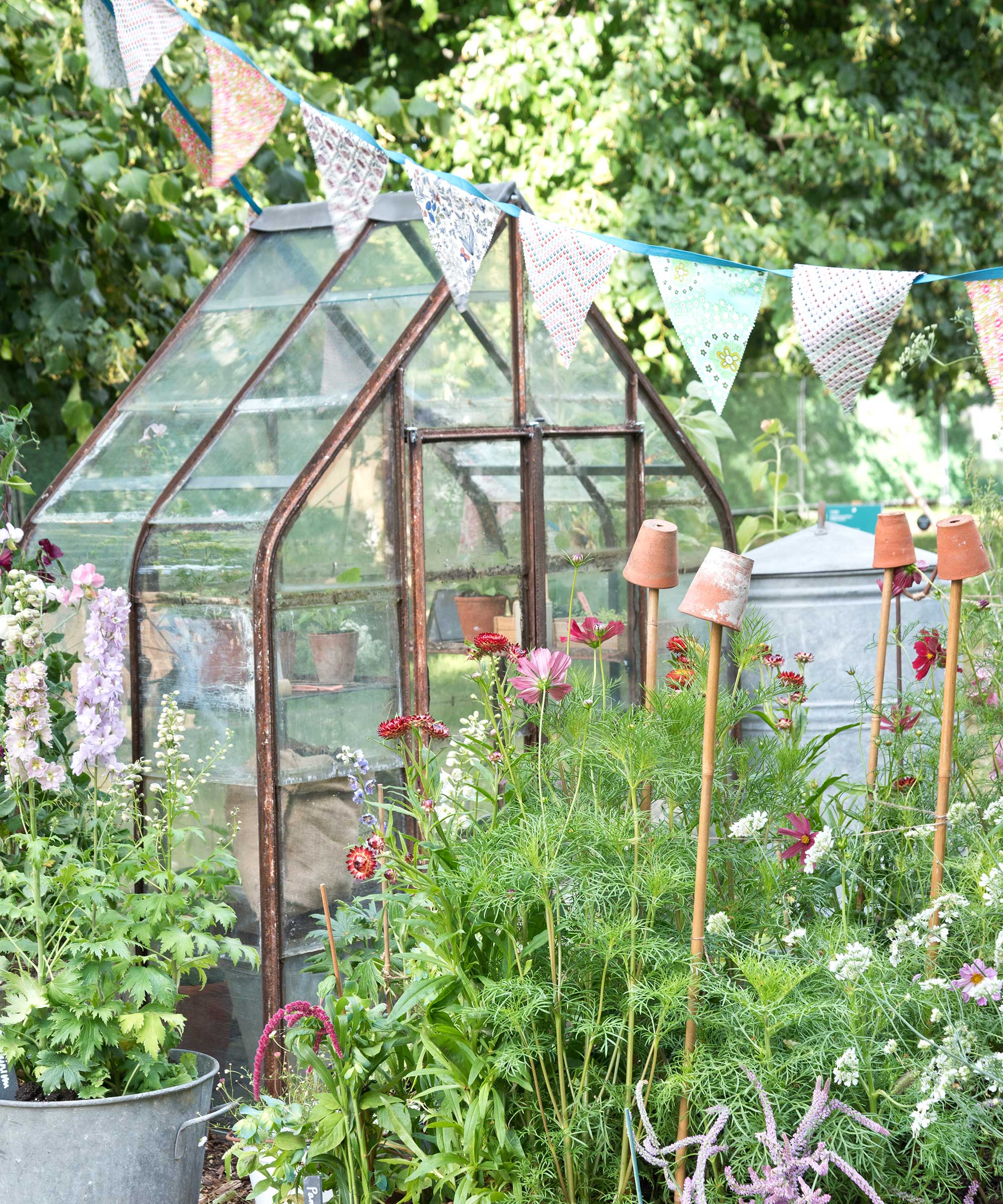
Even a small greenhouse can provide valuable protection for crops over winter
An unheated greenhouse can be a valuable addition to a vegetable garden, whether at the front or back of your plot. For a front yard, it may be best to opt for a smaller design, but they are still beneficial for starting veggies from seed or keeping crops protected throughout the colder months.
John Negus, a gardening expert, suggests planting winter salad, such as arugula, pak choi, or mizuna, as well as chives, parsley and mint which will continue growing all winter. You could also grow strawberry plants in pots and have fruits a month earlier than those growing out in the garden, he suggests.
'You can also make late-winter sowings of many plants, including sweet peas, calabrese, onions, summer cabbage, spinach and Brussels sprouts,' John adds.

John has been a garden journalist for over 50 years and regularly answers readers' questions in Amateur Gardening magazine. He has also written four books and has delivered many talks over the years on horticulture.
8. Make maintenance easier by adding pathways
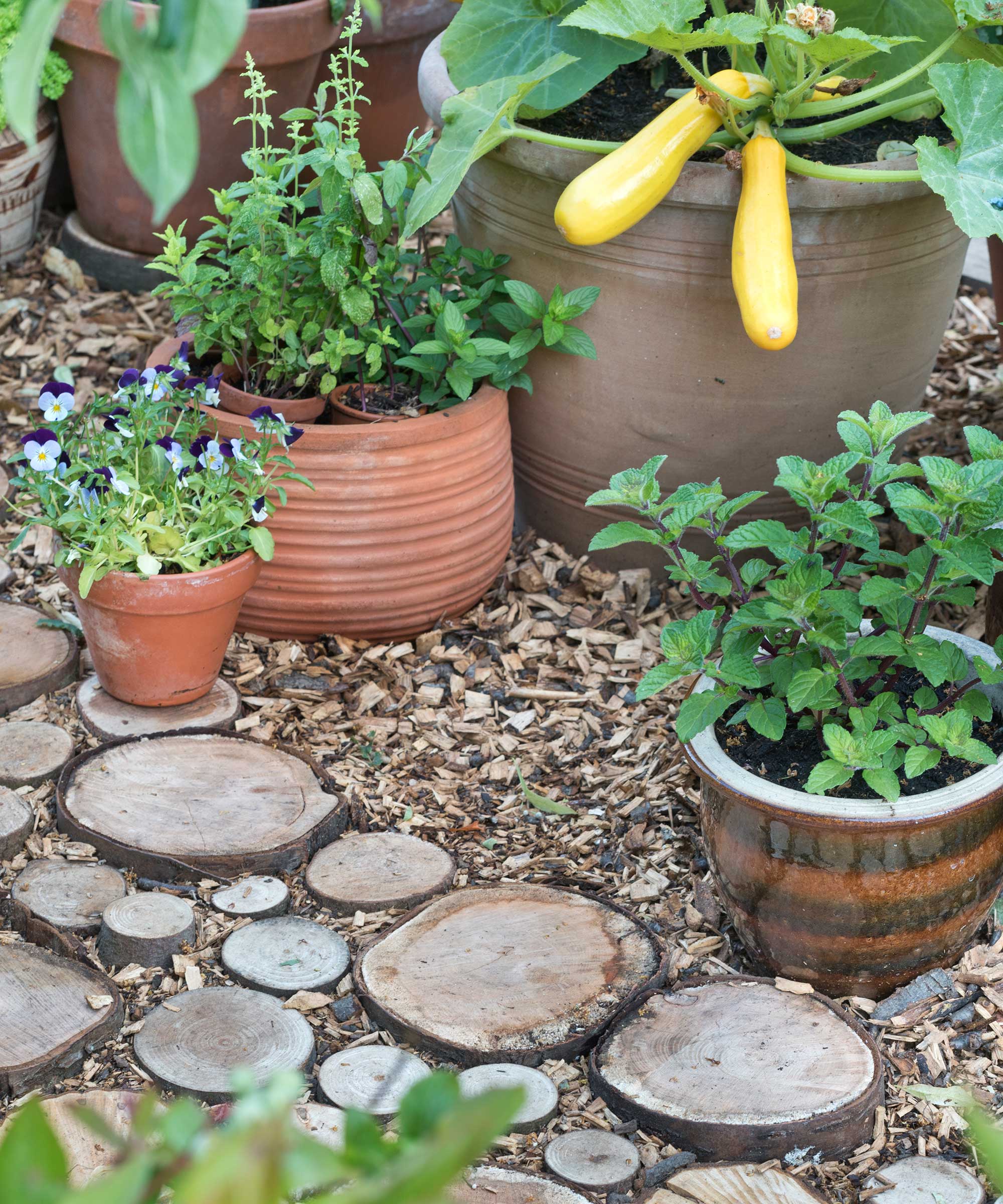
This style of pathway sets a rustic tone
Garden paths are essential for getting from A to B easily, and help to organize an outdoor space, too. So, be sure to add adequate pathways in your front yard vegetable garden. This will enable easy access to your crops for planting, watering, and harvesting, without the need to step on other plants in the process.
For a simple solution that can be installed yourself, put down weed-suppressing membrane (such as EcoGardener's landscape fabric from Amazon), topped with bark chippings. Adding slices of log, as shown above, is another option for a relaxed feel. Alternatively, opt for a more polished look with pavers or gravel.
9. Add evergreen structure with shrubs
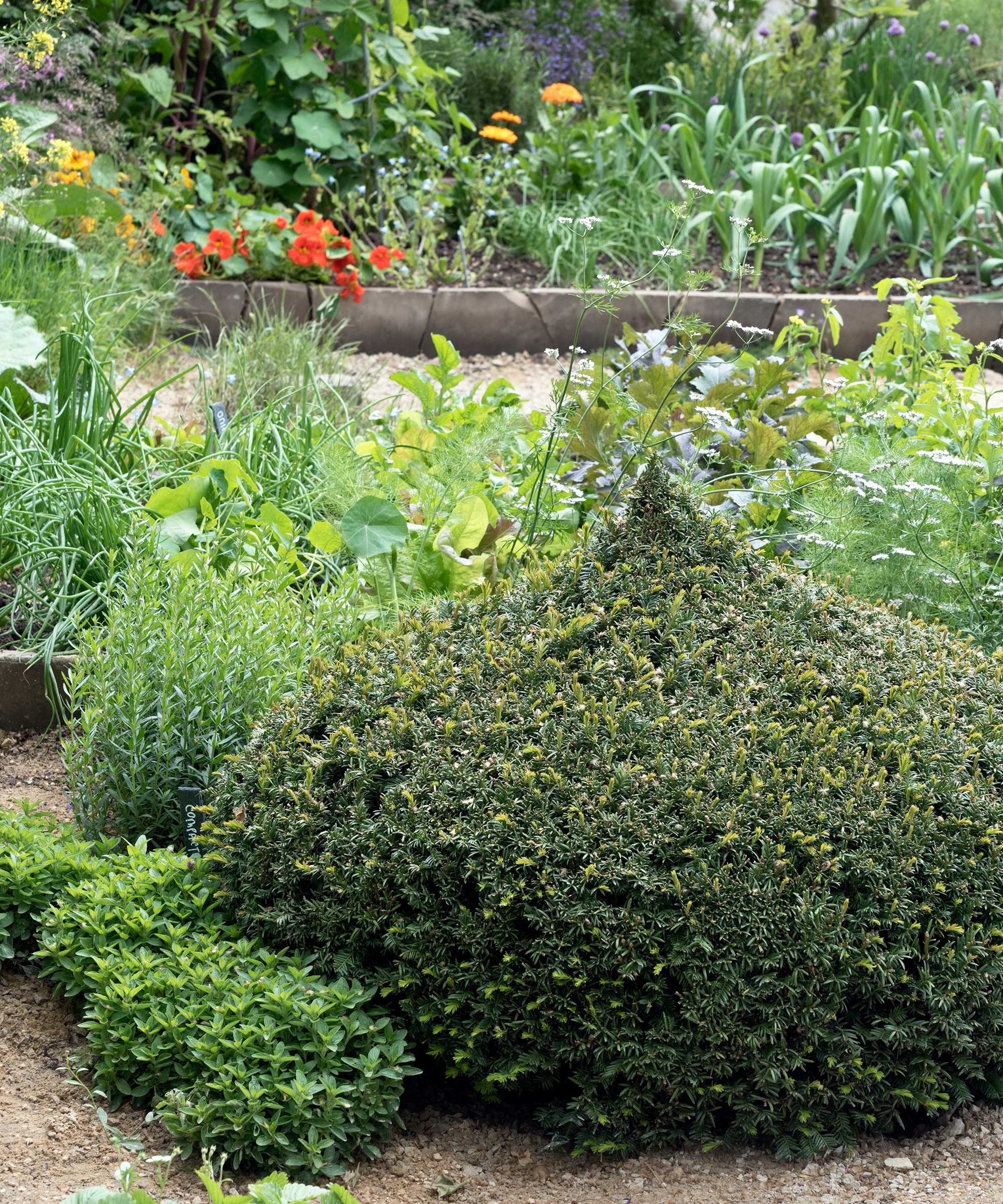
Some shrubs can be clipped into interesting shapes
Adding evergreen shrubs will provide color and structure to your front yard vegetable garden during the leaner months of winter (and beyond). Varieties such as privet or box can be neatly trimmed into small hedges or topiary, while some options, such as camellia or daphne, will provide fabulous flowers.
Of course, there are some winter vegetables you can grow, too, including kale and chard.
10. Plant a vertical vegetable garden
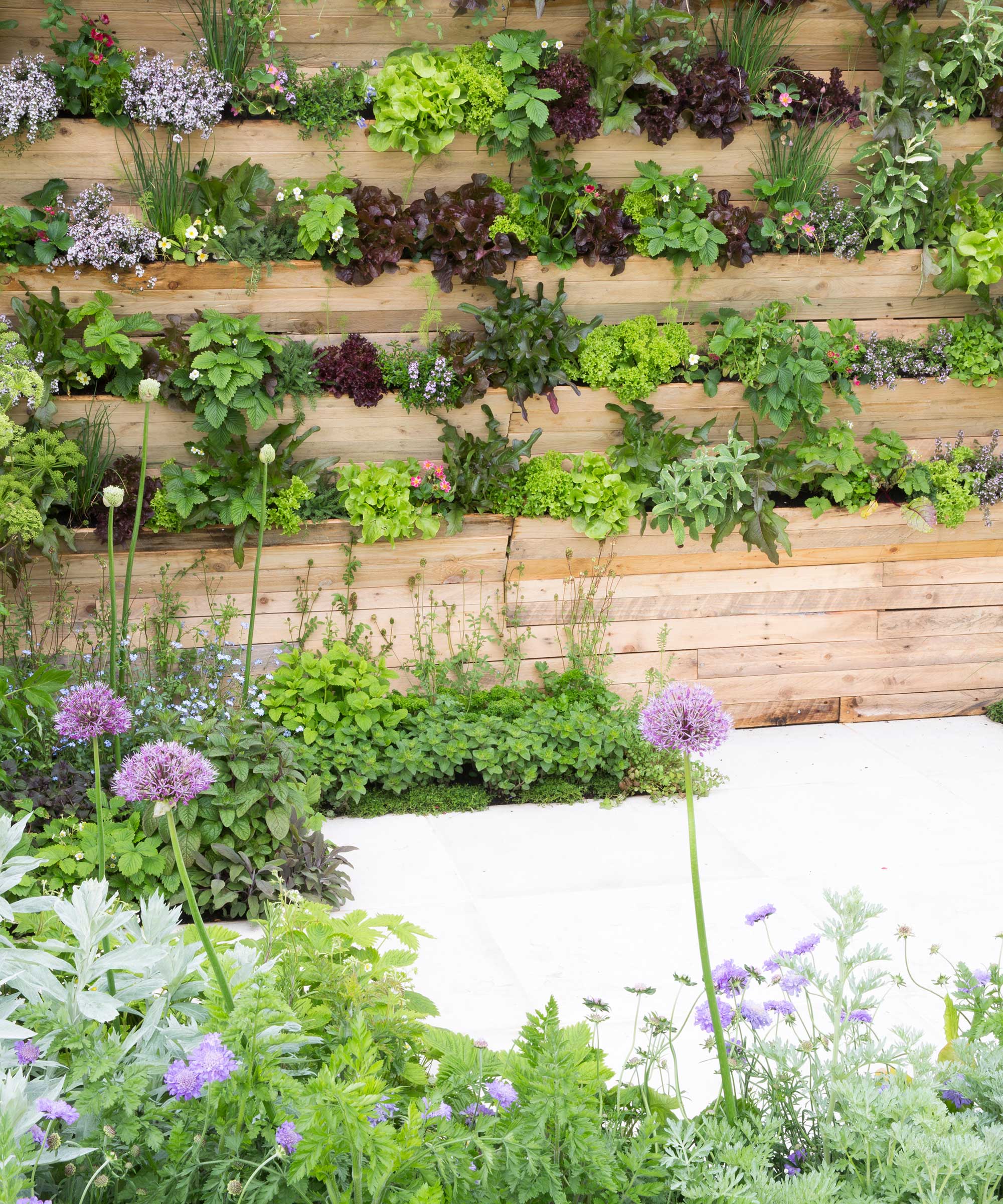
A living wall offers plenty of space for growing leafy greens
Vertical gardening is ideal for fitting more crops into compact spaces, such as front yards. There are multiple ways to go about it. Try planting a living wall with leafy greens, adding an obelisk to a raised bed for climbing beans, or using a trellis combined with a planter box for training peas, squash, or aubergines.
Some edibles are well-suited to hanging baskets, too, including strawberries and cherry tomatoes.
Cone Steel Obelisk | $72 from Terrain
Add this hand-crafted support to a large pot or raised bed planted with compact climbing vegetables.
FAQs
What are the best crops to grow in a front yard?
'Before starting your front yard garden, take some time to observe the amount of sunshine your front yard receives. This will help you determine the ideal vegetables to grow,' advises Autumn Hilliard-Knapp of Perfect Plants Nursery.
Many vegetables and fruits generally need a lot of sunshine to maximize their growth and productivity, says gardening expert John Negus. 'However, there are a few cropping plants that will tolerate some shade.' These include gooseberries, red and white currants and cane fruits (raspberries, blackberries and hybrid berries), he lists.
'I recommend including tall plants like tomatoes, peppers and trellised beans along borders or fences to create a sense of privacy from the street,' says Lindsey Chastain, the Founder of The Waddle and Cluck. 'Low-growing greens, carrots, radishes and herbs make great additions for front and center,' she adds. 'Most importantly, plant what you will eat!'
'With a front yard garden, you have the opportunity to create a stunning display of nature's beauty right at your doorstep,' says Autumn. And, with a bit of effort, you'll be rewarded with an abundance of freshly-picked, homegrown produce to enjoy throughout the seasons.
Plus, they often do better than backyard vegetable gardens, as Autumn points out. This is because they're more on-show, so owners are more inclined to tend to them!

Holly started writing about gardening five years ago, and she is a regular contributor to Homes & Gardens. She has also written many gardening features for Woman & Home and Real Homes, too. She has previous experience as a professional gardener, where she helped to plant and maintain private gardens. Holly has also looked after allotment plots over the years and loves to grow her own flowers and veggies from seed. In her spare time, she enjoys visiting local gardens, botanical drawing, and tending to her ever-growing collection of houseplants.

